Major project
Help people get empathy with mysophobia sufferers [Read more]
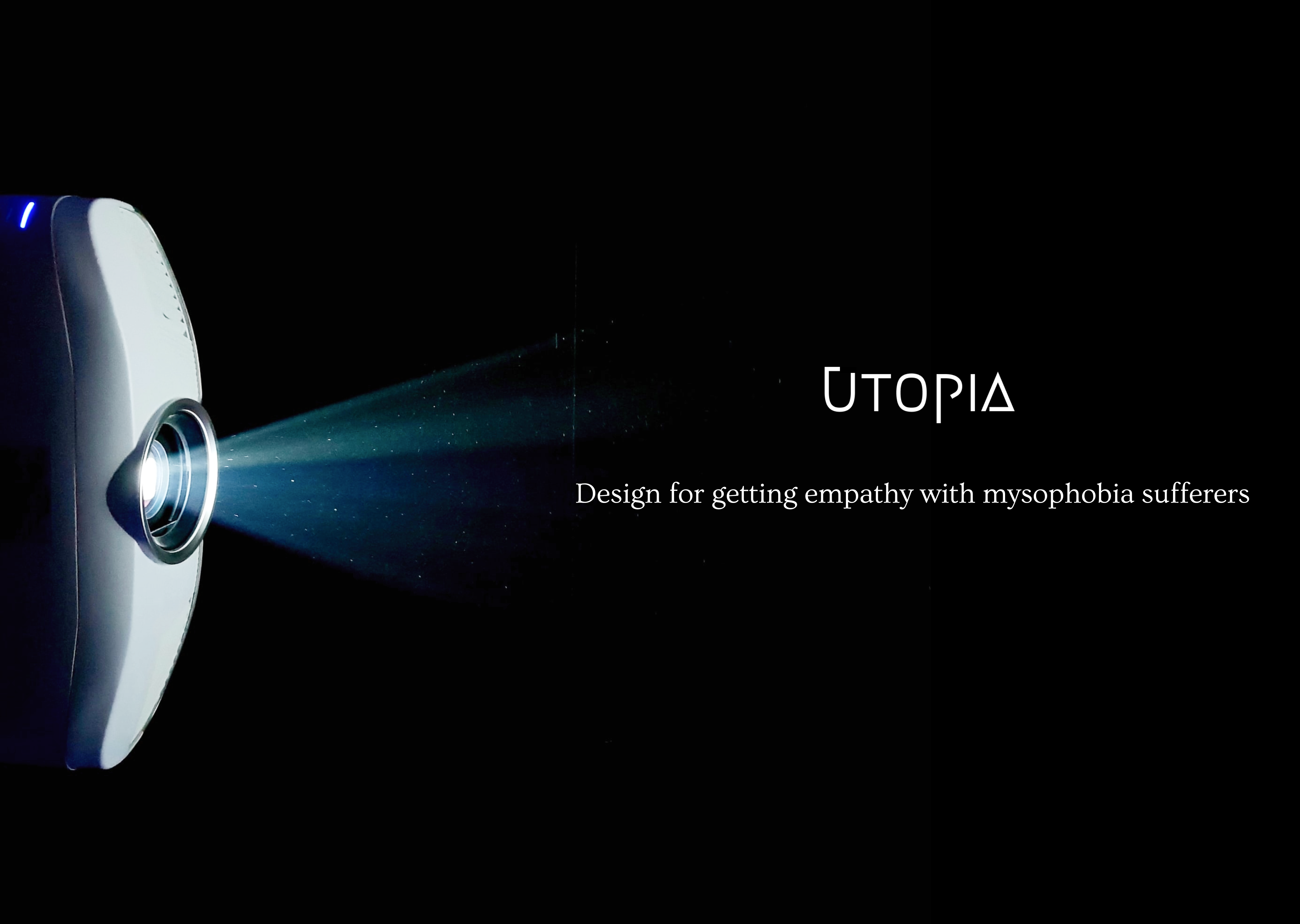
UTOPIA -- Feel mysophobia sufferers' feelings
Mysophobia is a type of phobia, which refers to unreasonable fear of contamination and bacteria. Sufferers are afraid of touching things and even contact with people.
UTOPIA is a mini projector that works with an App to help mysophobia sufferers' lovers understand what to do and also help them feel sufferers’ feelings.

The Challenge
Mysophobia will affect the sufferer’s physiology and psychology.
Excessive avoidance of contact with bacteria can cause dysregulation of immune system-microbe interactions which may lead to diabetes mellitus, inflammatory bowel disease and obesity.
Sufferers avoid social activities to avoid bacteria carried by others, and people around sufferers might not understand sufferers’ feelings and perceive sufferers as hostile or even paranoid. This can lead to isolation or even develop into social phobia.
COVID-19 has aggravated the symptoms of sufferers, and even more and more people are suffering from mysophobia. If there are no services or products to help them relieve their psychological pressure, there may be more mysophobia sufferers with social disorders, OCD in this society.
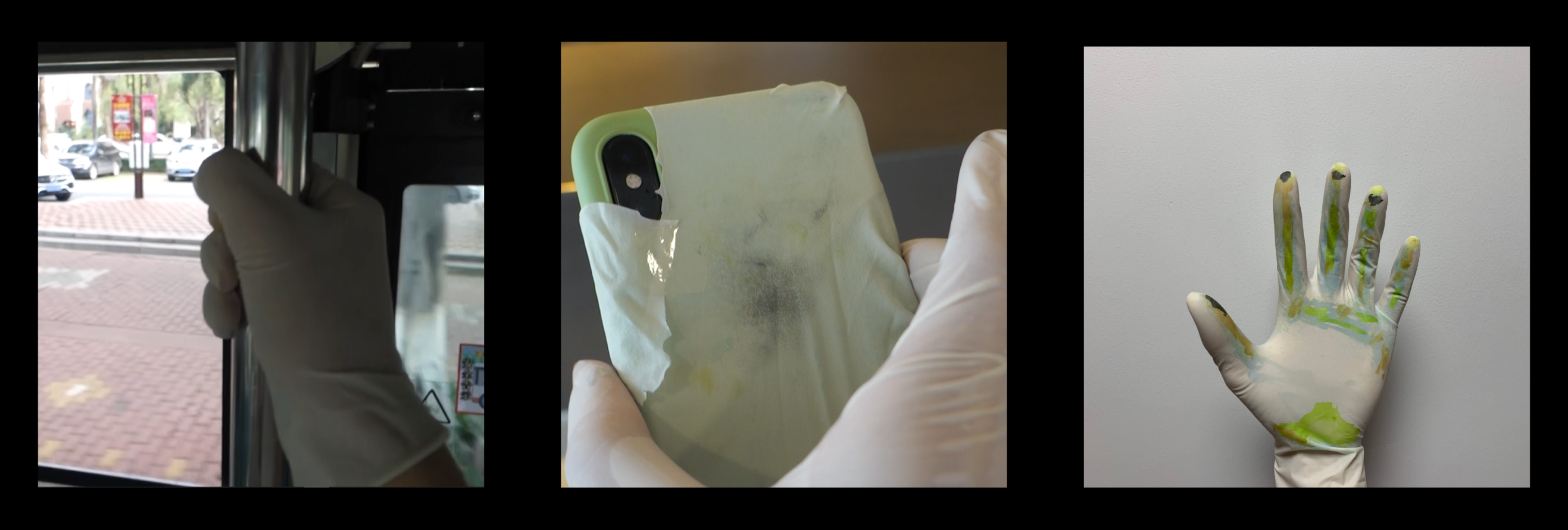
User research
Due to ethical issues, the researcher cannot contact any mysophobia sufferers, so the researcher can only collect sufferers’ data passively from online forums and discussion groups and collect data from people around sufferers.
Case study: To find the self-statements of the patients as widely as possible, the researchers collected more than 40 posts from three sources. 1. Social media 2. Published medical record 3. Published interview
Autoethnography: To understand sufferers’ feelings, the researcher plan a journey to simulate sufferers’ world. put on a pair of gloves on his hand. Each time the researcher encounters a different object, he would paint the contact area to indicate bacterial contamination. And he recorded the thoughts and feelings during the journey.
Semi-structured interview: 10 people around mysophobia sufferers were recruited to collect their pain points and goals when they contact sufferers.

Key insights and opportunities
Three insights were identified by using affinity diagramming:
People don’t know what mysophobia is. The “uncommon” behaviour will be classified as “abnormal” behaviour, which leads to the sufferers suppress their feelings and pretend to be non-sufferers.
Most people’s fear of bacteria stems from uncertainty. To avoid the bacteria carried by others, sufferers tend to avoid social activities or make rules for others which leads to the misconception that sufferers are hostile to others.
People around sufferers hardly talk with sufferers about their living habits. They only observe and get used to each other’s living habits. This process is long and always causes psychological pressure on sufferers, and it may lead to other psychological diseases, such as social phobia.
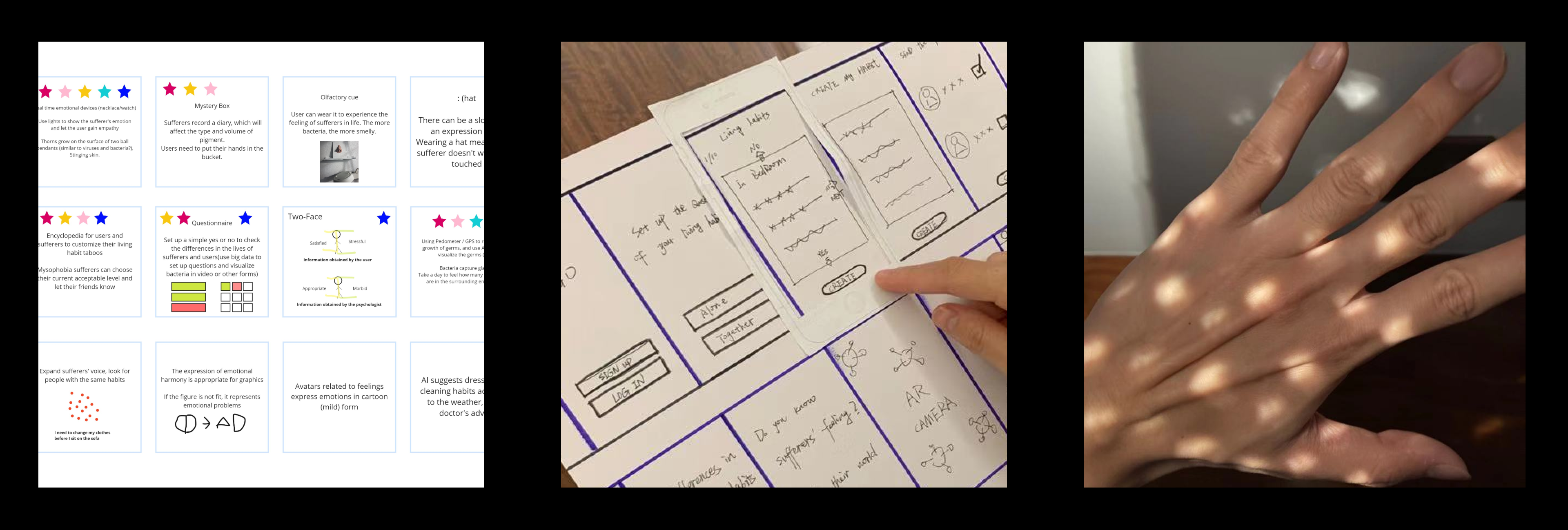
Design iteration
The researchers conducted four Co-design sessions with participants and produced 23 concepts.
After determining the final concept, the researchers created a paper prototype to test its feasibility.
Then, low fidelity and high fidelity prototypes were developed and tested on Figma.
All tests on the projector are tested through video calls or in family members.
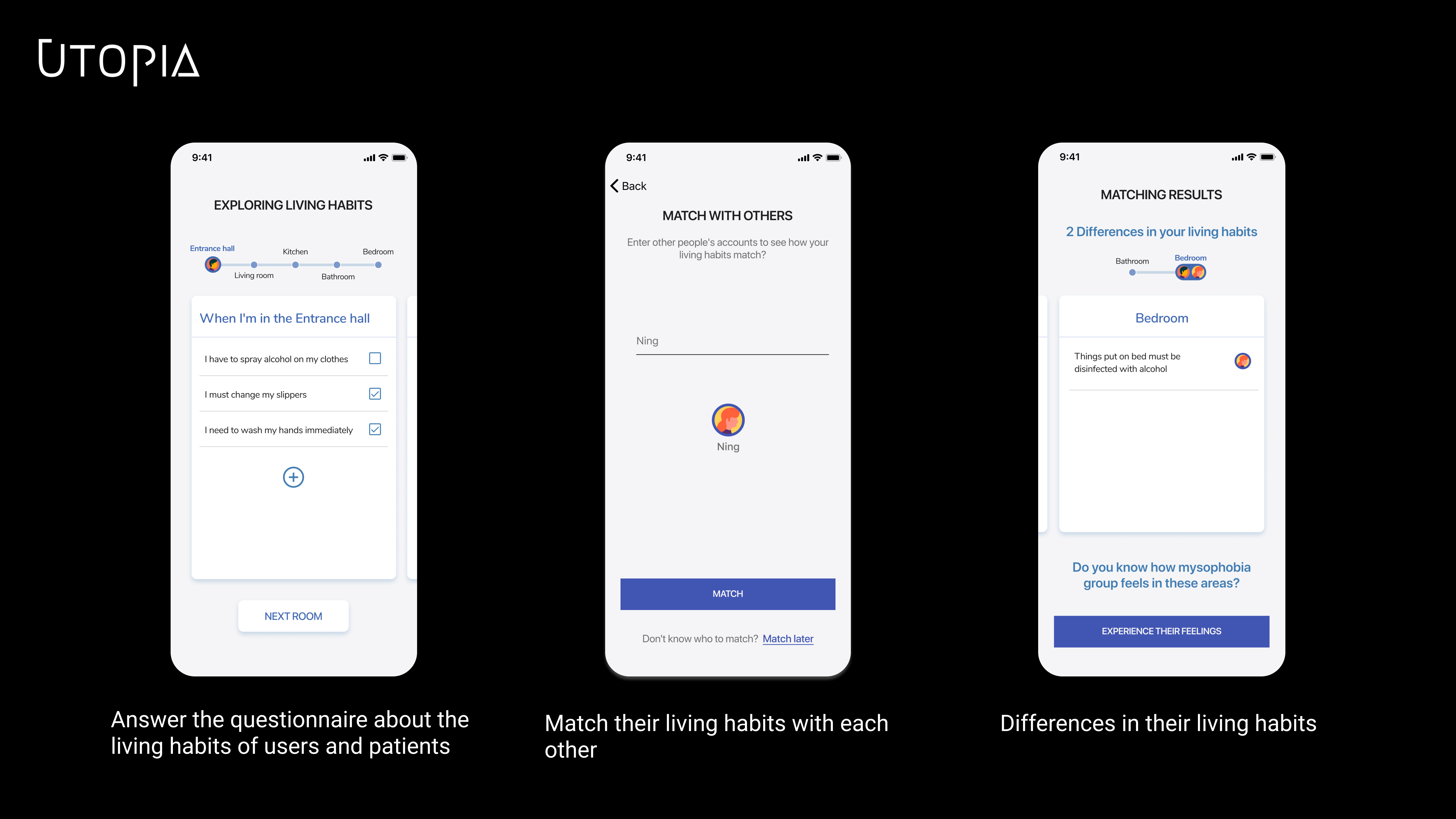
Final design — Journey 1
Use a questionnaire to help users and sufferers understand their differences in living habits.
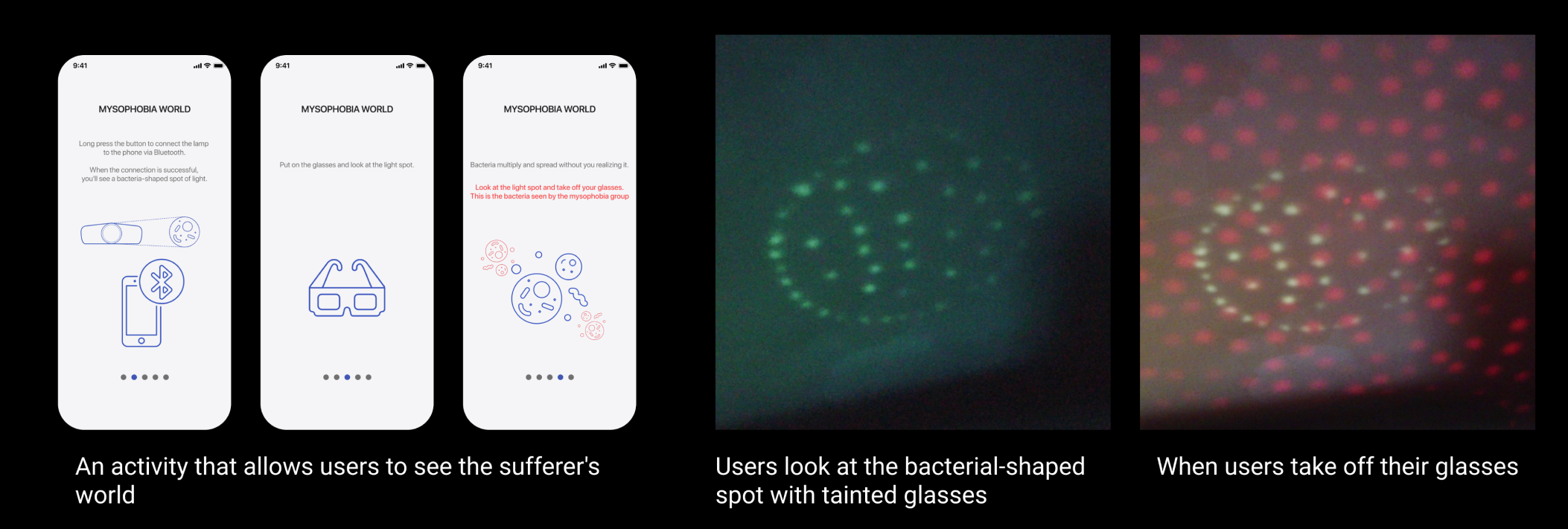
Final design — Journey 2
When the user sent up the projector, bacteria-shaped lights will appear.
Following the instruction of the app, the user needs to put on the tainted glasses.
When the user looks at the lights for a little while, the instruction will ask the user to take off the glasses.
And a lot of red lights appear which visualize sufferers’ thinking.
Then they just need to put the projector where the living habit differences happened. So, when the user sees the lights, they can realize that the lights represent the bacteria. So, they can remember what to do but also get empathy gradually.
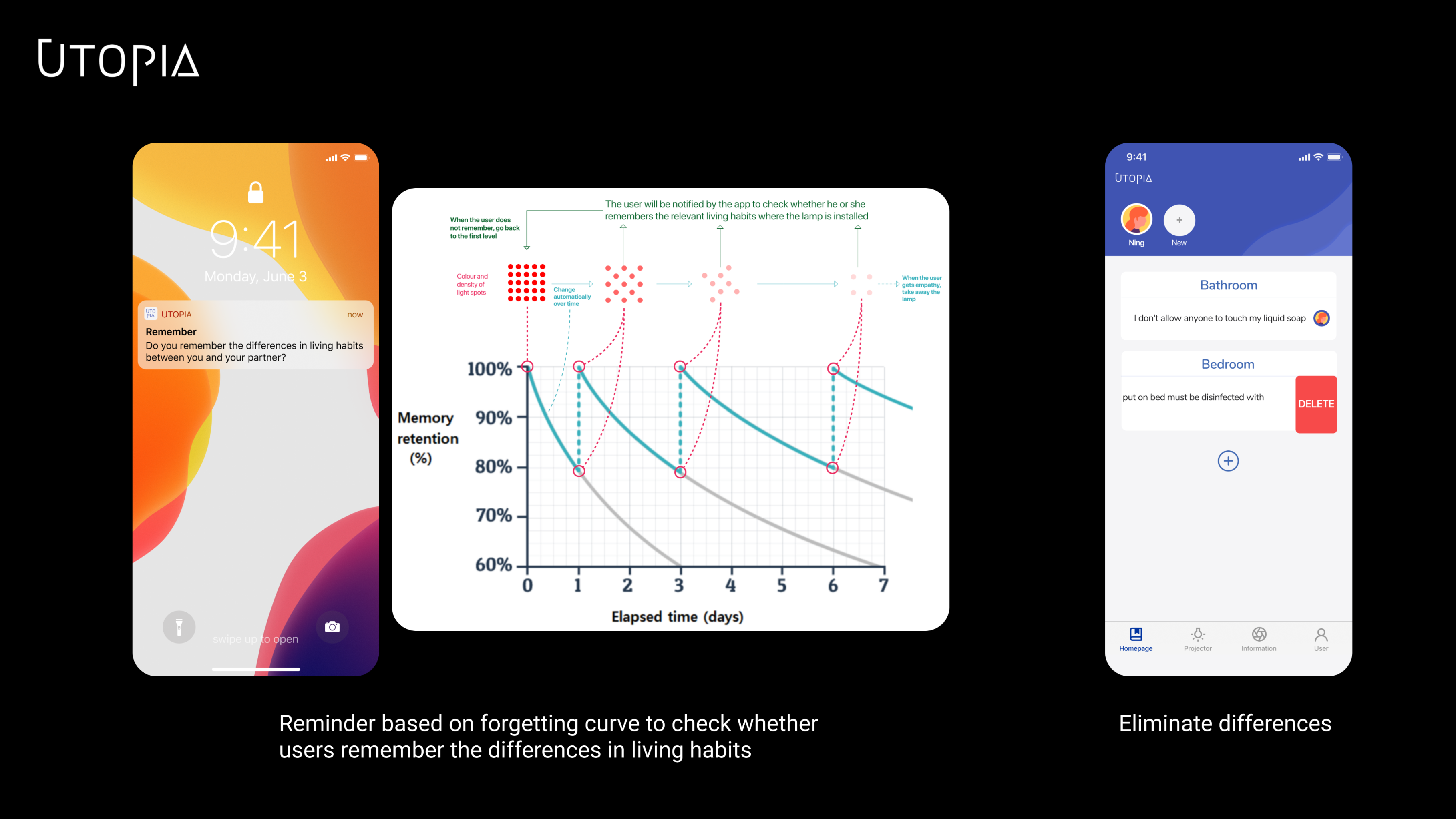
Final design — Journey 3
The density and the brightness of lights will decrease automatically based on the forgetting curve. When the memory retention drops to 80%, a message will be sent to users. When users remember the living habit differences, the density and the brightness of lights will decrease. At last, when it develops to long-term memory, users can hardly see the lights. So, they can delete the living habit differences.
Jianheng Guo
Everything I do is for fun :)
Major project
Help people get empathy with mysophobia sufferers